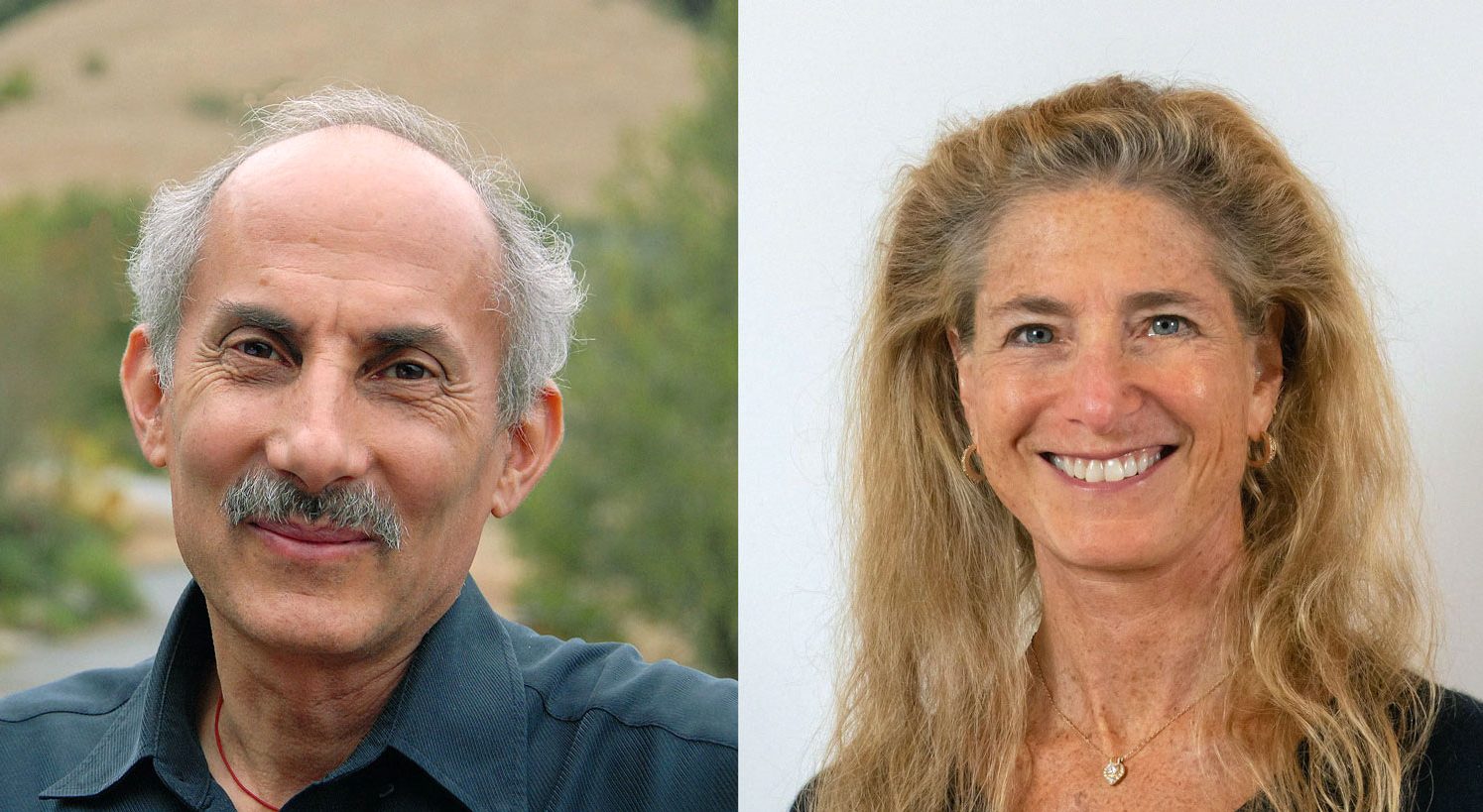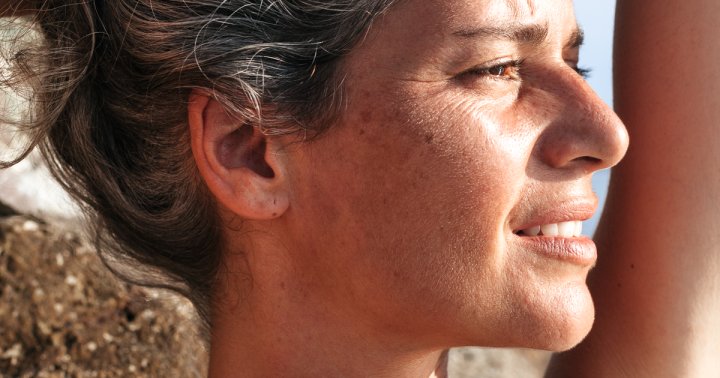Nuns Dance to a Song of Interconnection
A visit to Tek Chok Ling Nunnery in Nepal sheds light on the nuns’ unique practice of dancing to Milarepa’s “A Song of Meaningful Connection.” The post Nuns Dance to a Song of Interconnection appeared first on Tricycle: The...
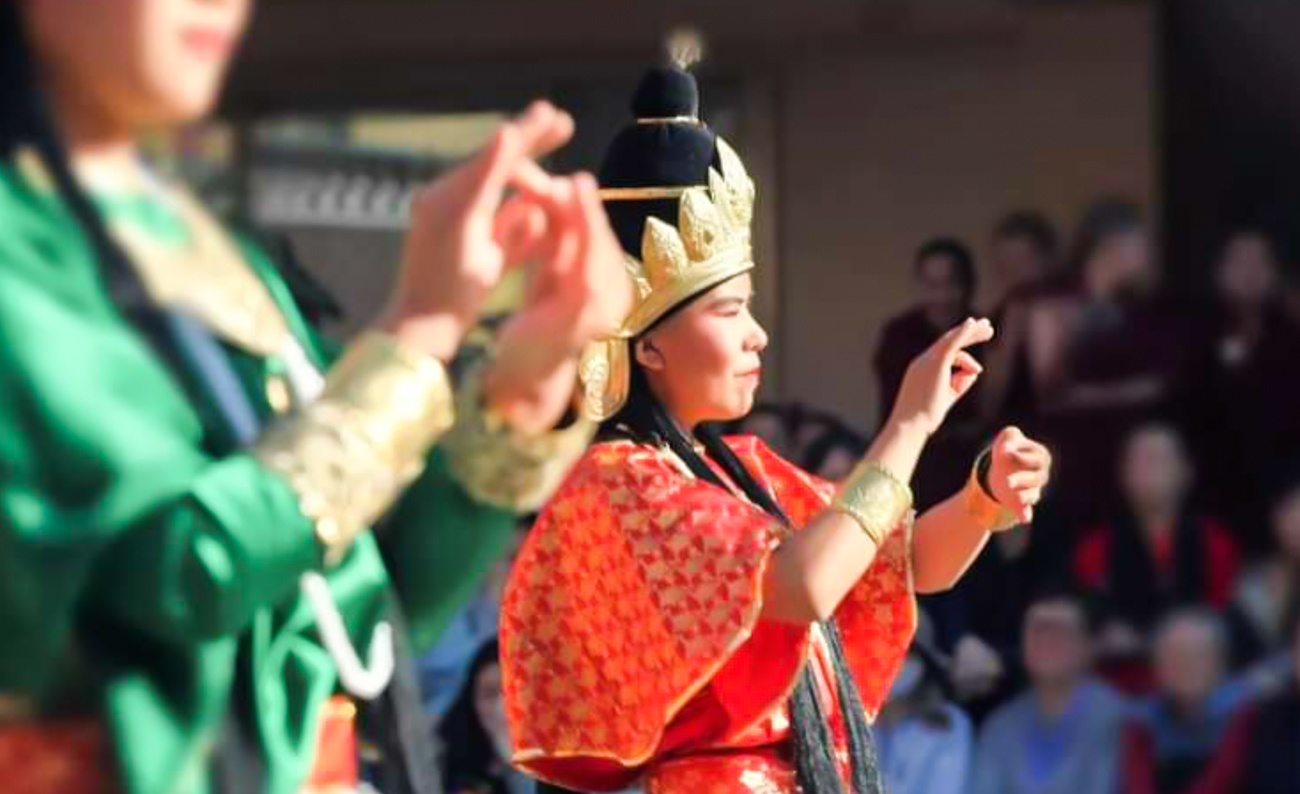
Radiating outward from the Boudhanath Stupa in Kathmandu, Nepal, is a web of streets and alleys buzzing with activity─dharma activity─of a large Tibetan community. On a quiet, hidden corner, sits Tek Chok Ling Nunnery─home to some seventy nuns ranging in age from 5 to 85 years old. Completed in 2006, the abbey, one of several started by the beloved scholar, teacher, and yogi Khenpo Tsültrim Gyamtso Rinpoche, is dedicated to the life and practice of female monastics.
The nuns at Tek Chok Ling carry on a regular, weekly sacred dance practice from two disparate traditions, the Tibetan tradition and the Newar Vajrayana tradition. Given that until recently, the practice of sacred dance was closed to female practitioners, this seemed to me a unique development. Indeed, this is all due to Khenpo Rinpoche’s deep enthusiasm and devotion to singing and dancing as a path to ignite spiritual understanding. Dzogchen Ponlop Rinpoche highlights this in his Dance of Great Bliss: A Biography of Khenpo Tsültrim Gyamtso Rinpoche:
Rinpoche has always placed great value on the songs of realization of Milarepa, such as those found in The Hundred Thousand Songs, as well as those of all the siddha forebears of the earlier and later schools. …
He made it possible for his students the world over to sing the above-mentioned songs of realization with newly adapted melodies in a wide variety of his students’ own languages: Tibetan, English, Chinese, and other tongues. He furthered their experience of hearing, contemplating, and meditating by encouraging them to accompany these songs with vajra dances.
A few years ago, I came across several online videos of some of the dances performed at Tek Chok Ling. Curiously, the nuns perform a selection of charya nritya dances of the Newar Vajrayana tradition. I must admit to experiencing a bit of shock when I first saw these dances. The Newar (indigenous people and culture of Nepal) traditions, with their sensuous tribhanga (triple bent) postures, exude quite a different flavor from the Tibetan sacred dance traditions, even though they convey the same dharma content. Eager to know more, I stopped by the nunnery on a recent visit to Kathmandu to learn about the origins of this practice and the background story of their other dances.
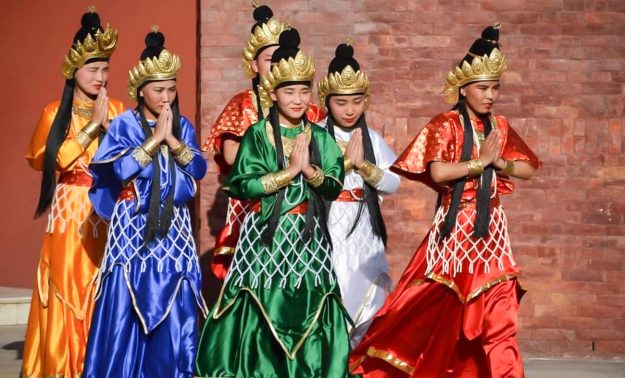 Photo courtesy Tek Chok Ling Nunnery
Photo courtesy Tek Chok Ling NunneryI was introduced to Tsering Youden, a 23-year-old nun who came to the nunnery at age 8 from the high Himalayan district of Manang, who explained how more than ten of the younger nuns learned and now regularly practice the charya dances. Almost a decade ago, in preparation for Khenpo Rinpoche’s 80th birthday celebration (he just celebrated his 89th), one of his foreign students, LiAnne Hunt, an accomplished charya nritya performer and teacher, offered to teach the nuns several of the dances to perform for the event. Hunt is also a student of my teacher, Prajwal Ratna Vajracharya, a thirty-fifth-generation Vajrayana priest and foremost lineage holder of this thousand-year-old tradition. It so happens that I am quite familiar with this dance tradition, as I practice it as well.
As you can see from the video taken a few years later at Khenpo Rinpoche’s 85th birthday, the nuns beautifully rendered the Dance of the Sixteen Offering Goddesses, with Tsering Youden in the lead in the white costume. Five dancers enter the courtyard in front of the Tek Chok Ling prayer hall to the sung charya giti (Sanskrit songs of praise), each gesturing a particular offering from the traditional Buddhist array of sense offerings that initiate sacred practice. Buddhist scholar Dr. Miranda Shaw explains: “The Dance of the Offering Goddesses is a danced form of devotion inviting the divine presence into the sacred space.” Guru Prajwal further clarifies: “The Offering Goddesses serve to open the practitioner’s senses and provide the energy to engage in sacred practice.”
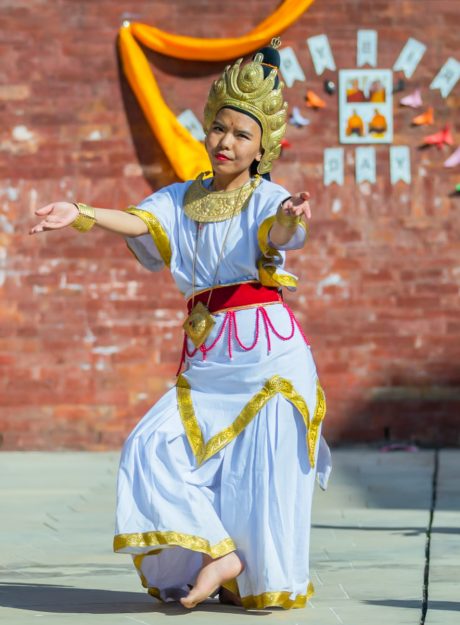 Photo courtesy Tek Chok Ling Nunnery
Photo courtesy Tek Chok Ling NunneryAs “Om” is chanted, the dancers gather their focus and energy, circling the vajra mudra (a hand gesture used in all charya dances to crown oneself as a deity) above their head, and proceed with the mimetic dance movements of offering the gifts: lute (veena) music, flute music, big drum (mridangam), little drum, finger cymbals, garlands, song, dance, flowers, incense, light (butter lamps), perfume, mirror of clear-seeing, taste, touch, dharmadhatu (realm of absolute truth). The dancers’ oscillating footsteps create a visualization of the vibratory field and effect these danced offerings radiate.
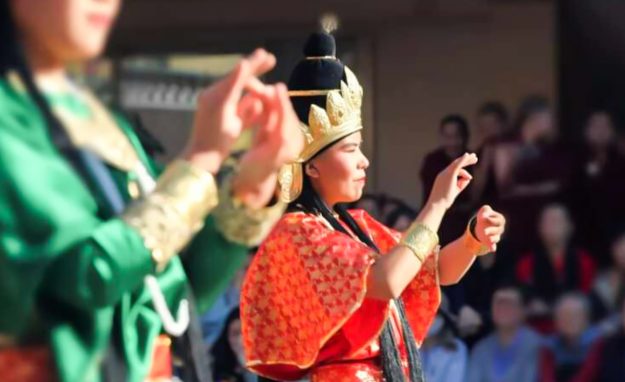 Photo courtesy Tek Chok Ling Nunnery
Photo courtesy Tek Chok Ling NunneryTsering Youden mentioned that the nuns also perform the charya dance of Manjushri, the bodhisattva of wisdom, as well as the Pancha Buddha (Five Buddhas), a performance mainstay during important festivals and religious occasions in local Newar Buddhist temples in Kathmandu. In the Pancha Buddha charya dance, five dancers represent the five transcendental Buddhas: Vairochana, Akshobhya, Ratnasambhava, Amitabha, and Amoghasiddhi, incorporating their iconographic postures, hand gestures, and qualities like a Buddhist painting come to life.
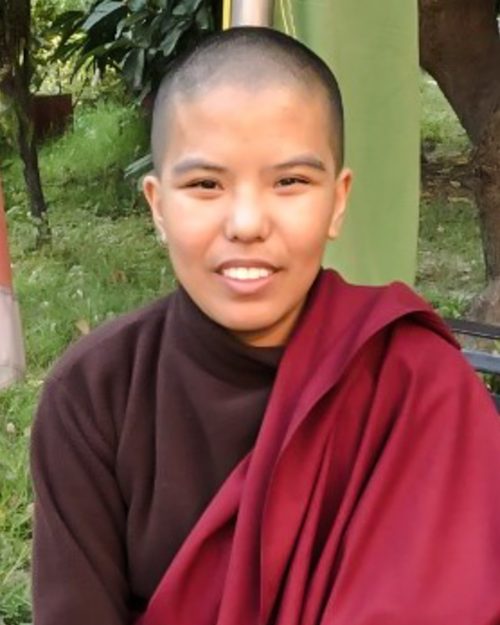 Tsering Youden | Photo by Karen Greenspan
Tsering Youden | Photo by Karen GreenspanTsering Youden exuded her enthusiasm for continuing to teach these dances as well as for teaching in general. She has been instructing the younger nuns in seven subjects─English, Tibetan, Nepali, Science, Social Studies, Computer, and Math. Tsering Youden recently left the nunnery to fulfill a six-month meditation retreat at their retreat center in Yolmo, which occupies a site where the great poet and yogi Milarepa meditated. After that, she hopes to complete higher studies to improve her teaching skills.
During my visit, Ani Dechen, who has served as a teacher and is currently the abbey administrator, filled me in on the details of the nunnery’s other dance practices. Khenpo Rinpoche has a profound dedication to and love of gurma─spiritual songs of realization─a genre of Tibetan sacred verse and song. The songs of Milarepa are an example of this extemporaneous poetic form and practice, often composed between long sessions of Tantric visualization, offering glimpses of these experiential states. The spontaneous composition of spiritual verse has been a favorite practice of Khenpo Rinpoche as well. Thus, he requested that the nuns of Karma Drubdey Nunnery in Bhutan (the first nunnery he founded) create a dance to one of Milarepa’s gurma and another to the sutra of “Arya-Tara Who Protects from the Eight Fears.”
Back in 1998, Khenpo Rinpoche instructed Ani Kheychok, a nun at Karma Drubdey and a talented singer, to engage in a year-long retreat along with seven other nuns. During this time, she composed the melody for Milarepa’s “A Song of Meaningful Connection,” while the other nuns began to choreograph dharma dances. They went on to arrange many more of Milarepa’s and Rinpoche’s songs to music. Rinpoche was evidently delighted and encouraged them to continue this effort and establish a unique tradition of practice.
 A nun at Karma Drubdey performing a Milarepa gurma dance for Losar | Photo courtesy Karma Drubdey Nunnery
A nun at Karma Drubdey performing a Milarepa gurma dance for Losar | Photo courtesy Karma Drubdey NunneryTsering Youden described how “A Song of Meaningful Connection” tells of the interdependence (tendrel) of all things. As she explained, I couldn’t help but feel the amazing, meaningful connection that she and I shared in performing the same dance tradition. How unlikely was that, as well as this chance meeting and discovery? (I came with no appointment or introduction.)
Milarepa composed and sang “A Song of Meaningful Connection” to his sister Peta and his former betrothed Zessay when he was on the verge of death from starvation and struggling to meditate. He was revived by the nourishment they brought him, and he expressed his appreciation to them in this song of interdependence as he redoubled his efforts at meditation.
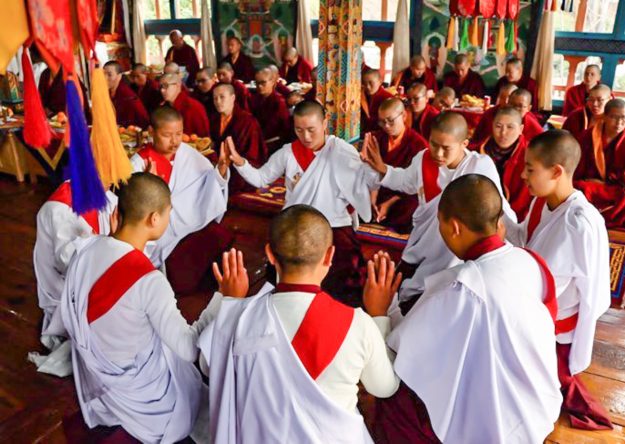 Karma Drubdey nuns performing Milarepa gurma dance for Losar | Photo courtesy Karma Drubdey Nunnery
Karma Drubdey nuns performing Milarepa gurma dance for Losar | Photo courtesy Karma Drubdey NunneryThe nuns sing the song as they perform a circle dance, which consists of gestures and postures describing the narrative. They wear their maroon monastic robes, over which a white shawl is draped─suggestive of the “repa” in Milarepa’s name, meaning “cotton-clad” in Tibetan. This refers to the thin, cotton cloth Milarepa and other yogis wore (and still do) as they pursued their yogic practices.
The nuns usually perform the “Tara Dance” in their regular robes, although occasionally, they dress it up with colorful robes and crowns alluding to the twenty-one forms of Tara. They chant the sutra of “Tara Who Protects from the Eight Fears” as they perform the simple dance of gestures and postures moving in a circle. The eight fears─lions, elephants, fire, serpents, robbers, water (floods), plagues (also defined as fetters or prison), and demons─can apply to real physical dangers of everyday life, especially those present in ancient India, where the text originated. However, each fear also aligns with internal obstacles to overcome. For instance, lions are equated with pride, elephants with stupidity, fire with anger, snakes with jealousy, thieves with wrong ideas, and so on, culminating with the ocean of desire, prison of greed, and demon of doubt.
The Tek Chok Ling nuns traveled to Bhutan to learn the dances from the Karma Drubdey nuns. Now, both groups practice these dances and perform them (with the addition of the charya nritya dances at Tek Chok Ling) every year on Khenpo Rinpoche’s birth anniversary and occasionally for special visitors. In fact, at both nunneries, they have a dedicated dance practice night once a week. Ani Dechen explained that all nuns learn and perform these two dances, and the younger nuns learn the dances once they have mastered the accompanying liturgies from their prayers.
My charya nritya teacher, Prajwal Ratna Vajracharya, frequently quotes the Hevajra Tantra, reminding us, “Without singing and dancing, there can be no enlightenment.” He and Khenpo Tsültrim Gyamtso Rinpoche must be onto something. Perhaps it is an understanding of the direct and meaningful connections that so swiftly arise through engaging in these embodied expressions of transcendent beings, which are ultimately aspects of our own buddhanature.

 KickT
KickT 







